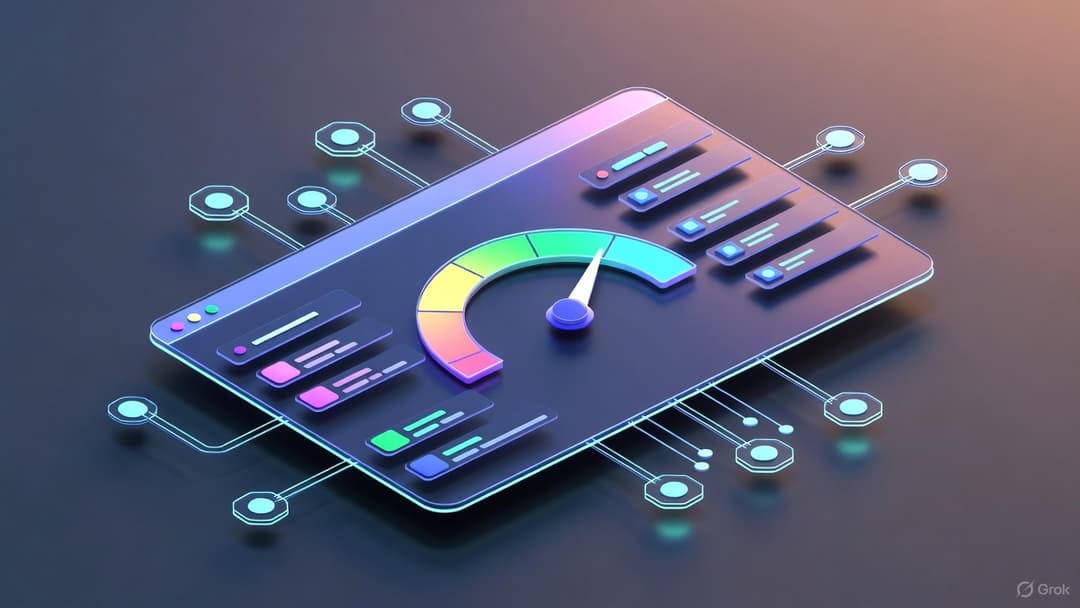
INP Optimization in 2025: The Complete Guide to Scoring Under 200ms
By Ghazi Khan | Nov 17, 2025 - 5 min read
Interaction to Next Paint (INP) replaced FID in March 2024, and 2025 is the year teams finally started taking it seriously. With Google tightening ranking signals, every millisecond matters — especially on mobile, where most INP regressions happen.
The goal is simple:
If your INP is ≤ 200ms, your site feels instantly responsive.
If it isn’t, users feel your UI dragging — even if everything “looks fast” on Lighthouse.
This guide breaks down everything you need to know to score under 200ms in 2025, using browser updates, React optimizations, scheduling APIs, hydration tuning, and third-party script control.
Let’s make your site fast for real users — not just benchmarks.
🔍 What INP Actually Measures (2025 Definition)
INP measures how long your UI takes to respond to user interactions like:
- clicks
- taps
- key presses
It captures the full chain from:
- Input delay
- Event handler execution
- JavaScript long tasks
- Rendering + painting
This makes INP the most honest responsiveness metric Google has shipped so far.
📊 2025 Benchmark Targets
| Rating | INP Score |
|---|---|
| Good | ≤ 200 ms |
| Needs Improvement | 200–500 ms |
| Poor | > 500 ms |
Teams that reach ≤200ms INP typically see:
- 12%+ uplift in conversions
- 18% lower bounce rates
- Faster perceived UI
This is one of the easiest wins in Core Web Vitals — if you know where the bottlenecks live.
🚀 What Changed in 2025 (And Why INP Scores Improved Automatically)
Chrome, Safari, and Firefox shipped updates that quietly helped developers:
1. Chrome now excludes pointerup from scroll gestures
This reduces false INP spikes on scroll-heavy sites.
2. CMP vendors fixed major long-task issues
OneTrust, Axeptio, Complianz now “yield” more often.
3. Modal interactions now give visual feedback earlier
Better presentation timing → smaller INP windows.
4. Android cookie caching got a big upgrade
This improved both INP and LCP on Chrome Mobile.
You get free performance wins from these updates — but the biggest improvements still come from your own JavaScript.
🧨 The 7 Biggest INP Killers in Real Apps
From debugging dozens of production apps, the real culprits are:
- Long JavaScript tasks (>50ms)
- Heavy synchronous event handlers
- React rendering waterfalls
- Ad/analytics/heatmap scripts
- Layout thrashing
- Hydration bursts in frameworks
- Large synchronous imports
Let’s fix each one.
⚡ 1. Break Long JavaScript Tasks Using Scheduling API
Anything lasting more than 50ms blocks input responsiveness.
Use Chrome DevTools → Performance → record a click → find long tasks.
Break work into chunks using the Scheduling API:
import { scheduler } from 'scheduler-polyfill';
function heavyTask() {
for (let i = 0; i < 500; i++) {
scheduler.postTask(() => computeChunk(i), {
priority: 'background',
});
}
}
⚡ 2. Event Handlers Must Execute Under 20ms
If your click handler looks like this:
button.addEventListener('click', () => {
doHeavyWork();
updateUI();
});
…it will 100% hurt INP.
Offload the heavy work:
button.addEventListener('click', () => {
requestIdleCallback(doHeavyWork);
queueMicrotask(updateUI);
});
⚡ 3. Fix React Rendering Waterfalls
React can easily blow past 200ms if:
- props change unnecessarily
- components rerender deeply
- hydration fires everything at once
Fix with:
React.memo,useCallback,useMemo- Code splitting (
React.lazy) - Avoid passing new functions as props
- Use server components where possible
- Profiling using React DevTools
In 2025, React hydration remains one of the top causes of poor INP.
⚡ 4. Tame Third-Party Scripts
The silent INP killer.
Scripts that commonly tank responsiveness:
- Ads
- Hotjar / Clarity
- Chat widgets
- Heavy analytics
Fix:
- async and defer
- Load analytics on user interaction
- Self-host where possible
- Budget 3rd-party scripts (max 3–5 critical ones)
⚡ 5. Stop Layout Thrashing
Forced reflows freeze the main thread.
❌ Bad
element.style.width = '200px';
console.log(element.offsetWidth);
This forces layout twice.
✅ Good
const width = element.offsetWidth;
element.style.width = width + 'px';
Batch DOM reads then DOM writes.
⚡ 6. Move Heavy Work Off Main Thread with Web Workers
Use Workers for:
- sorting
- JSON parsing
- image manipulation
- AI inference
const worker = new Worker('worker.js');
worker.postMessage(data);
worker.onmessage = (e) => updateUI(e.data);
Instant main-thread relief → better INP.
⚡ 7. Reduce Hydration Cost in 2025 Frameworks
SPA hydration is still expensive.
Fix hydration delays:
- Prefer server components
- Defer hydration until idle (
requestIdleCallback) - Use islands architecture (Astro, Qwik)
- Stream HTML
- Avoid hydrating full pages at once
📈 Real Case Studies (2024–2025)
Case 1: Ecommerce Retailer
INP: 350ms → 160ms
Conversion: +12%
Case 2: Travel Booking Site
LCP: 4.1s → 2.2s
Bounce rate: –18%
Case 3: Checkout Flow
CLS: 0.23 → 0.05
Cart abandonment: –9%
These improvements came mostly from removing long tasks and delaying hydration.
📐 INP Lifecycle Diagram
flowchart LR A(User Interaction) --> B(Input Delay) B --> C(Event Handler Work) C --> D(Long Tasks) D --> E(Paint) E --> F(INP Score)
🧭 Final Thoughts
INP is brutally honest. If your UI stutters — even once — Google will catch it.
But the good thing? INP is also one of the easiest Core Web Vitals to fix when you focus on:
- splitting long tasks
- reducing React renders
- optimizing hydration
- controlling scripts
- using browser-native scheduling
Follow these steps consistently, and scoring under 200ms becomes completely achievable in 2025.
Advertisement
Ready to practice?
Test your skills with our interactive UI challenges and build your portfolio.
Start Coding Challenge